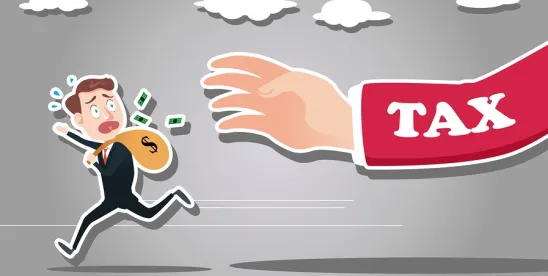Key Points
-
New York State lawmakers, who are looking to make up the gap in the state's annual budget, are considering proposals for nearly $7 billion in tax hikes in a package that includes taxes on mezzanine and preferred equity financing, and a tax on individuals with second homes in New York City (commonly known as a "pied-à-terre" tax).
-
The proposal would subject mezzanine and preferred equity financing to the mortgage recording tax. It would also require mezzanine lenders and preferred equity investors to file a Uniform Commercial Code (UCC) financing statements in the county land records in order to perfect their security interests and enable them to exercise remedies under Article 9 of the Uniform Commercial Code.
-
The pied-à-terre tax would authorize additional taxes on one-, two- and three-family homes with a market value in excess of $5 million and condominium units and co-ops with an assessed value in excess of $300,000.
Introduction
The deadline for New York State legislature to adopt a new budget for the 2021-22 fiscal year is April 1. New York lawmakers faced with a budget gap — the result of revenue shortfalls due, in part, to the COVID-19 pandemic — are considering new taxes to boost revenues. This advisory summarizes two new taxes under consideration that would affect the real estate industry: a proposed tax on mezzanine and preferred equity financing transactions and a new tax on high-value pied-à-terre second homes.
Mezzanine and Preferred Equity Financing Tax
Budget bills before the New York Senate (S. 2509-B, Part SS) and the Assembly (A. 3009-B, Part VV) would revise Section 291-k of the New York Tax Law to make mezzanine and preferred equity financing subject to New York's mortgage recording tax (collectively, the Mezzanine Tax). Mortgage recording tax would need to be paid on the principal amount of such mezzanine and preferred equity financing, where such debt or financing is "related to the real property upon which a mortgage instrument is filed," (i.e., where mezzanine or preferred equity financing is subordinate to primary mortgage debt). The bill defines "mezzanine debt" and "preferred equity investments" as:
"[D]ebt carried by a borrower that may be subordinate to the primary lien and is senior to the common shares of an entity or the borrower's equity and reported as assets for the purposes of financing such primary lien. This shall include non-traditional financing techniques such as a direct or indirect investment by a financing source in an entity that owns the equity interests in the underlying mortgage where the financing source has special rights or preferred rights such as: (i) the right to receive a special or preferred rate of return on its capital investment; and (ii) the right to an accelerated repayment of the investors' capital contribution."
The vagueness of this description opens the door to the possibility that the mortgage recording tax could be found to apply in contexts outside of typical real estate mezzanine and preferred equity financing, such as corporate financing transactions where the underlying assets include real estate and, possibly, certain joint ventures where investors are entitled to what could be construed as a "preferred rate of return."
In addition, for any mezzanine or preferred equity financing related to real property upon which a mortgage is to be filed, a UCC financing statement would need to be filed with the mortgage instrument in the county land records where the mortgage is filed. Section 253 of the New York Tax Law and Section 9-601 of the New York UCC would be revised to provide that (1) remedies under the UCC would not be available to the mezzanine lender or preferred equity investor unless the mortgage tax is paid, and (2) a security interest with respect to such mezzanine debt or preferred equity investment may be perfected only if a UCC financing statement is filed. The provisions of the bill that reference perfection of security interests and remedies under the UCC in the context of preferred equity are particularly confusing, given that preferred equity investments are typically not structured as secured transactions under Article 9 of the UCC. A preferred equity investor would not typically have a secured interest in any collateral or file a UCC financing statement, and remedies of the preferred investor are typically contractual in nature and do not arise under the UCC.
The proposed Mezzanine Tax would both impose the state mortgage recording tax on mezzanine and preferred equity financing transactions and authorize counties and cities to impose local mortgage recording taxes on such transactions as well. Mortgage recording taxes vary from locality to locality; however, in New York City, the combined state and local mortgage recording tax is 2.80 percent of the principal amount for principal debt in excess of $500,000. It goes without saying that the application of mortgage recording taxes to mezzanine and preferred equity transactions that, until now, have been free of such impositions will have significant impacts on borrower financing decisions.
Beyond the obvious issue of the additional tax burden that the Mezzanine Tax would impose on mezzanine and preferred equity borrowers, the other proposed changes to be enacted, along with the Mezzanine Tax, pose troubling questions such as:
-
Will mezzanine lenders be permitted to avail themselves of the mortgage-lending practice of outgoing lenders assigning existing debt to incoming lenders in order to reduce mortgage recording tax costs? How would this work in the context of preferred equity financing, where the "debt" constitutes an equity interest in an entity rather than indebtedness evidenced by a note?
-
Will the Mezzanine Tax be interpreted to apply to other financing transactions that only indirectly relate to real property interests; for example, corporate-level debt secured by indirect interests in assets that include real property, or even to certain joint ventures where one investor has a right to a "preferred rate of return"? The inclusion of language in the New York Senate and Assembly budget bills, stating that "non-traditional financing techniques" will be subject to mortgage recording tax, indicates that this may be the case.
-
How will the Mezzanine Tax be applied in multi-state transactions involving multiple real property assets located in other states, as well as New York?
Pied-À-Terre Tax
Another new tax under consideration in the New York State legislature would authorize cities with a population of 1 million or more (effectively, only New York City) to impose new taxes on high-value second homes (the pied-à-terre tax). The pied-à-terre tax would apply to one-, two- and three-family residences with a market value in excess of $5 million (calculated based upon the average value of the property for the previous five years), as well as condominiums and co-op units with an assessed value in excess of $300,000. Homes used as primary residences, either by the owner or by the owner's parents or children, would be exempt from the tax.
The bill would authorize supplemental annual taxes on real property subject to the tax as follows:
-
For one-, two- and three-family residences subject to the tax, a rate of not less than one-half percent and not more than four percent on the amount of the market value of the real property that exceeds $5 million; and
-
For condominium and co-op units subject to the tax, a rate of not less than 10 percent and not more than 13.5 percent on the amount of the assessed value of the real property (or, in the case of a co-op, the assessed value attributable to the applicable stockholder) that exceeds $300,000.
New York State lawmakers have introduced bills to implement a pied-à-terre tax in various forms over the past several years without success, and now the pied-à-terre tax has once again been revived due to the State's budget woes. Previous versions of the pied-à-terre tax proposed in the New York State legislature included additional exemptions from the tax, such as an exemption for properties that are rented on a full-time basis, that are absent from the present version of the tax. The proposed version of the tax now before New York State lawmakers only exempts homes used as primary residences by owners or their parents or children, as discussed above.
As of this writing, the pied-à-terre tax has only been included in the New York State Assembly's budget bill (A. 3009-B, Part WW), but the New York State Senate has so far elected not to include the pied-à-terre tax in its budget bill (S. 2509-B). It remains to be seen whether the two houses of the State legislature will reconcile the difference to either include or omit the pied-à-terre tax from the final budget bill.





 />i
/>i
